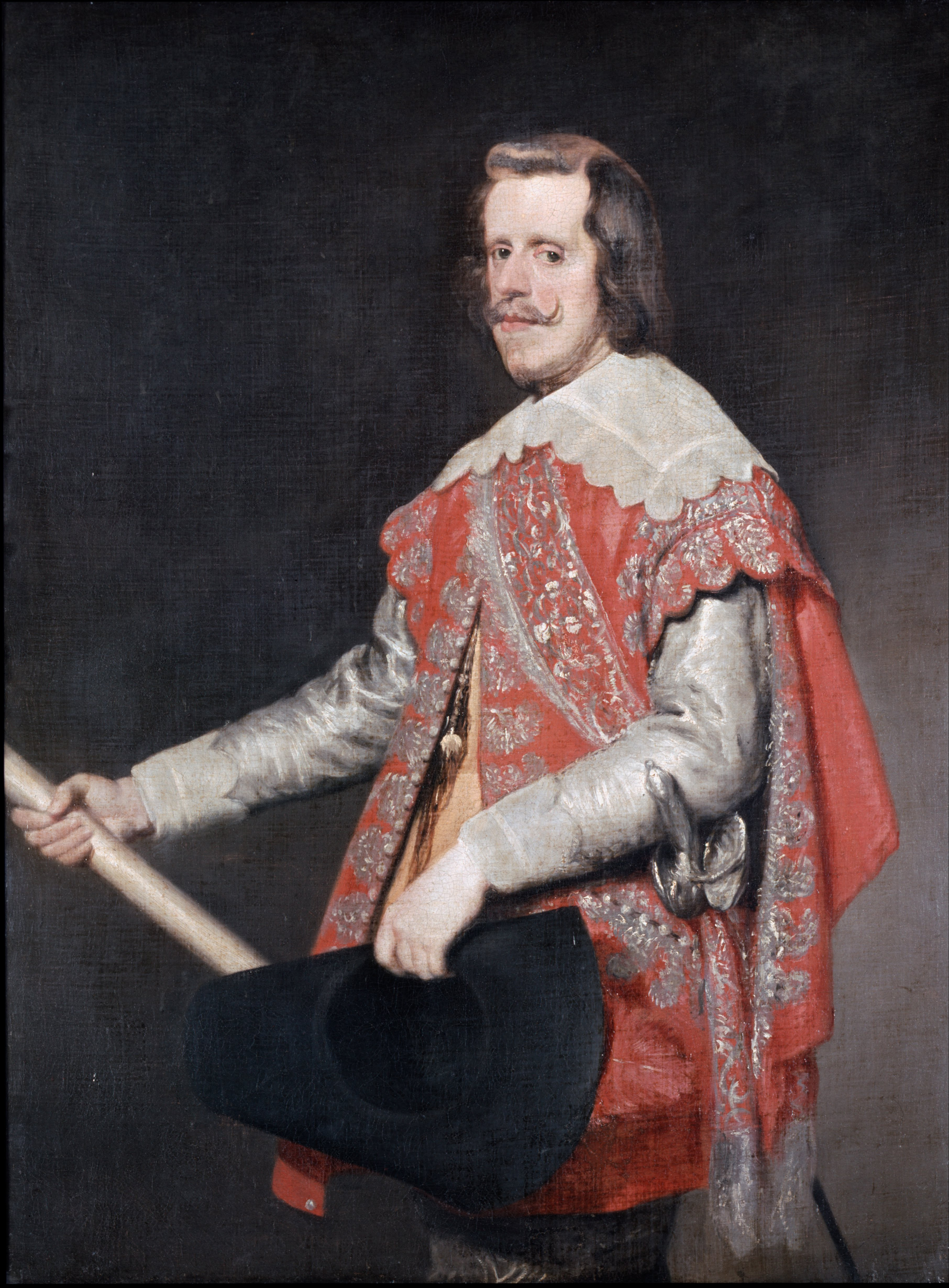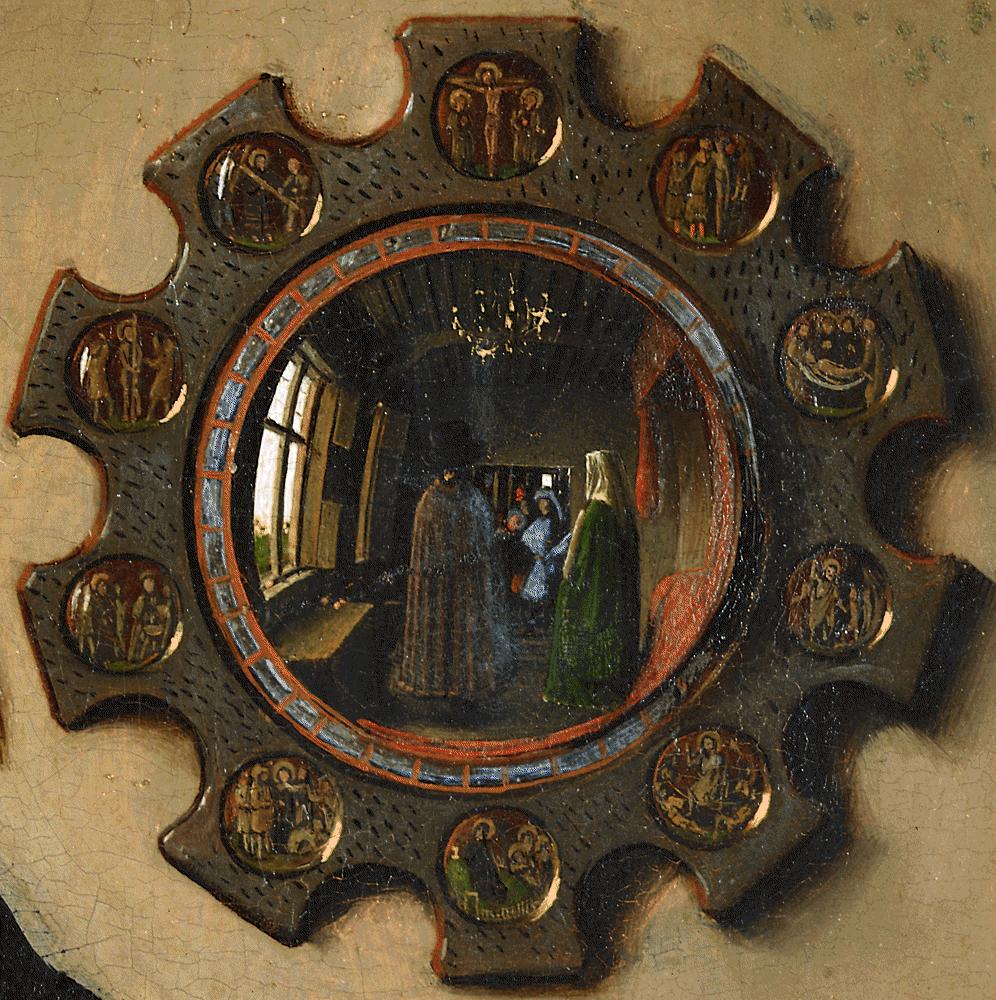Diego Velazquez: A Spanish master
Diego Velàzquez is one of the most important and influential Spanish painters of the seventeenth century. He started off painting scenes of daily life and then made an incredibly rich career as the official portrait painter at the court of King Philip IV.
He worked around the same the same time as baroque artists such as Caravaggio, Rembrandt and Vermeer, but he developed a personal style which is easily recognizable by the visible brushstrokes and his use of a strong contrast between light and darkness (also called tenebrism from the Italian tenebroso=dark and gloomy).
What does the painting represent
There are a lot of characters in this painting so it’s easy for the observer to get lost in all the intricacies. So let’s dive into each one together.
The infanta
It’s not initially clear where the little girl is looking at, but when we see the reflection of the Spanish rulers in a mirror in the wall in the back. This trick of using mirrors in the composition can also be seen in Jan van Eyck’s “The Arnolfini Portrait”.

Members of the court
Furthermore, on both sides of the infanta are the two meninas ( ladies in waiting or maids), and on the right two dwarves and an adorable Spanish mastiff laying down.

Just behind them are the princess’s chaperone and a guard In addition, standing in the doorway is Josè Nieto Velazquez (it’s not clear whether he was related to the painter or not) the queen’s chamberlain.

Velazquez' self-portrait
Then on the left is the most curious figure of all: Diego Velazquez himself. He certainly wasn’t the first artist to paint himself in one of his works, but it’s certainly a bizarre choice to make oneself so prominent in what was supposed to be a royal portrait.

In fact, the whole scene is set in his studio at the Alcázar and we can the painter in the act of working on one of his paintings (since the dimensions are quite similar some believe it’s exactly las meninas, but we can’t say for sure).
Fun fact
On his chest we can see the cross of the Order of Santiago which was added after Velàzquez’ death under the command of King Philip.

Composition
Despite the apparent rowdiness and chaos of the Alcazar studio, this painting is actually clearly designed and has a solid structure.
Perfect geometric prospective
As you can probably see in the diagram next to this paragraph, Velazquez follows perfectly geometric rules. He underlines the perspective with the many canvases on the wall of his studio. That is to say that their sides all direct towards a vanishing point just below Jose’s hand near the open door in the back of the scene.

Furthermore, all the characters are in the bottom half of the painting, leaving the top half to the ceiling and two big painting hanging in the back wall. I think the result is not that o overcrowding the space, but more of concentrating the viewer’s attention on the people while giving the illusion of actually being in the studio with them.

Light and shadow
In perfect tenebroso style, the painting is mostly in shadow with small areas of light. The little princess with her white dress is the lightest part of the painting. Perhaps it is a way to draw the eyes to her character and also show how the other character (who are all servants working for her) are drawn to her light.

Color palette
This isn’t exactly a colorful painting, in fact the main colors are all earth tones with small accents of red. These browns soften the black darks and give off to the observer a very warm atmosphere as though you could feel the light shine on the wood of the canvas and on the floor.

Personal thoughts
As much as I love art in general I have a soft spot for portraiture, therefore it was obvious that I would find myself studying the works of a master like Velazquez. Honestly though, I prefer other works of his, where his brushstrokes are more visible and the scene isn’t as packed.
Nevertheless, Las Meninas has always fascinated be because of its storytelling possibilities. It’s not clearly shown, but I feel like in the air there is something going on that as an observer I would like to grasp. Wouldn’t you want to know what the chaperone is telling the guard and what the Queen’s Chamberlain is setting off to do? And most of all what Velazquez is trying to tell about himself. I feel as though I’m looking at a picture he is sharing on Instagram to show how his work day is going.
What do you think
Not long ago I came across this copy of Las Meninas while visiting Kingston Lacy in England. It was really a wonderful experience finding this hidden pearl in a room. It got me thinking because most of the visitors didn’t even realize that they were looking a painting created by one of the most important Spanish masters. This painting is one of the reasons I started this blog in the hope of sharing my passion for art to others and maybe also the joy that sparks in me whenever I see a work of art.

Have a closer look at the painting







Wanna learn more?
Just head over to my other articles and dive into the art world with me.
And don’t forget to check out my instagram profile to keep up with the most recent posts and interact with me.








